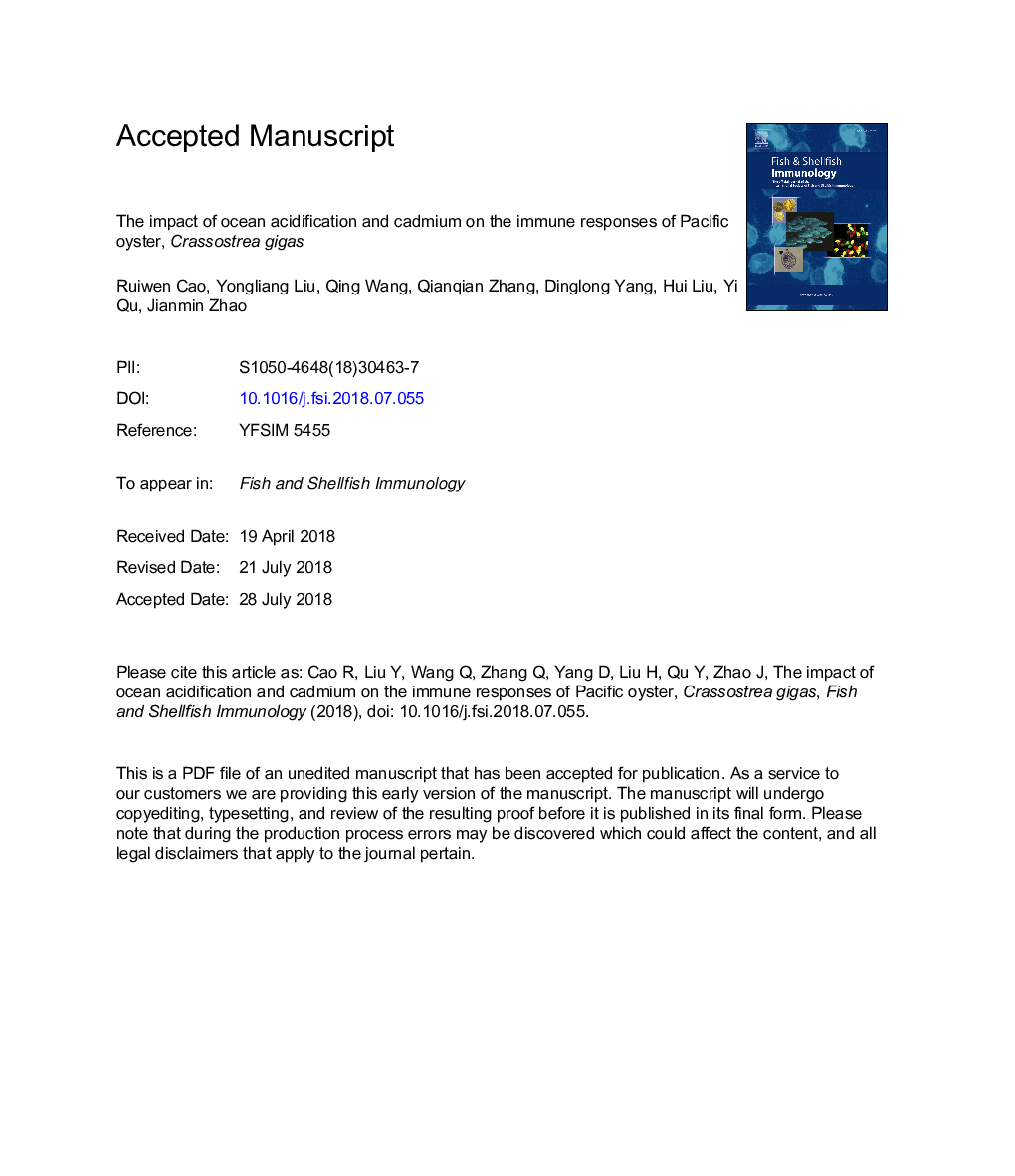| Article ID | Journal | Published Year | Pages | File Type |
|---|---|---|---|---|
| 8498177 | Fish & Shellfish Immunology | 2018 | 25 Pages |
Abstract
Seawater acidification (OA) and cadmium (Cd) has the potential to lead to immunosuppression effect on marine bivalves. However, the interaction between these two environmental stressors on immune system of marine bivalves has received limited attention. In order to evaluate the defense responses of oysters under the combined exposure to OA and cadmium, the oysters Crassostrea gigas were exposed to 10â¯Î¼g/L Cd at three pH levels (8.1, 7.8 and 7.6) for 31 days. Results showed that OA exposure alone led to increased DNA damage, apoptosis rate and ROS production of hemocytes. However, inhibited phagocytosis rate, combined with increased DNA damage, apoptosis rate and ROS production of hemocytes were observed in oysters under exposure to Cd exposure alone or combined with OA. Significant interactive effects between OA and Cd were observed on ROS production and DNA damage of hemocytes. In addition, there is generally significant increase in the mRNA expression of genes related to immune-related TLR pathway and two immune factors (TNF and integrin beta-1B) in Cd-exposed oysters at pH 7.6. The results revealed that even though the mRNA expression of genes related to immune responses (TLR pathway and immune factors) was stimulated to counteract the immunosuppression caused by acidified seawater and Cd, depressed hemocyte function perhaps sensitized oysters to potential pathogen infection.
Related Topics
Life Sciences
Agricultural and Biological Sciences
Aquatic Science
Authors
Ruiwen Cao, Yongliang Liu, Qing Wang, Qianqian Zhang, Dinglong Yang, Hui Liu, Yi Qu, Jianmin Zhao,
